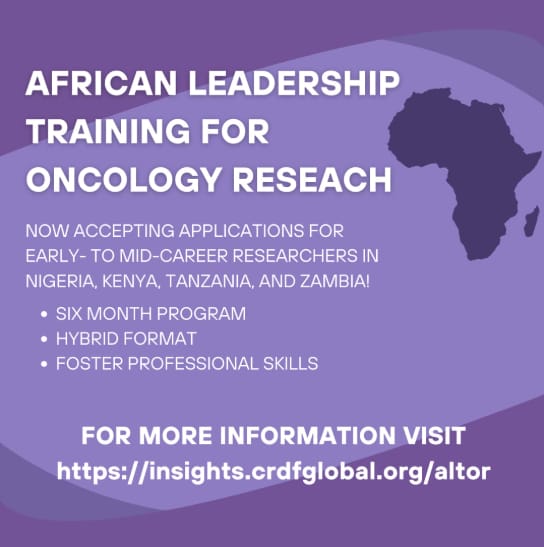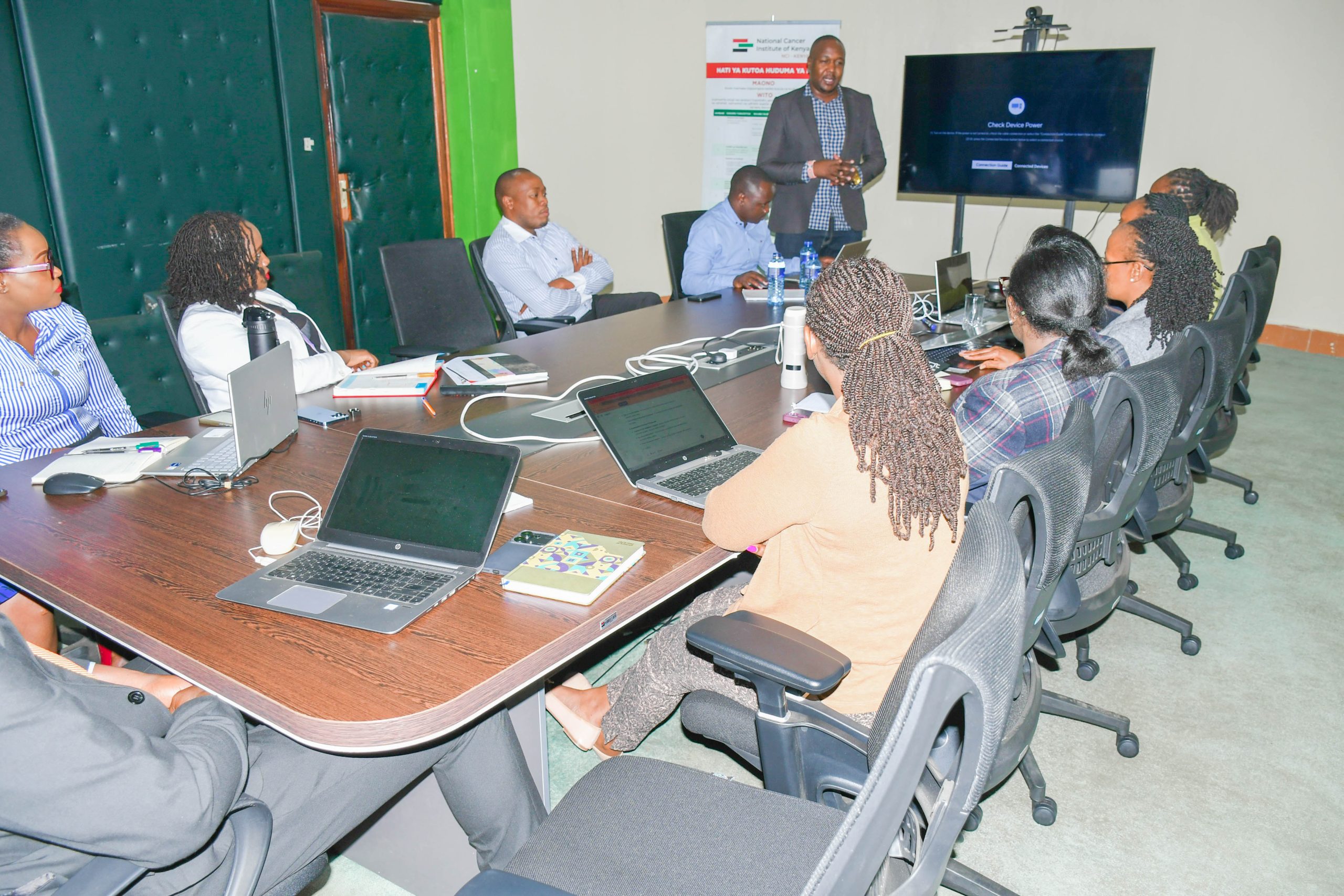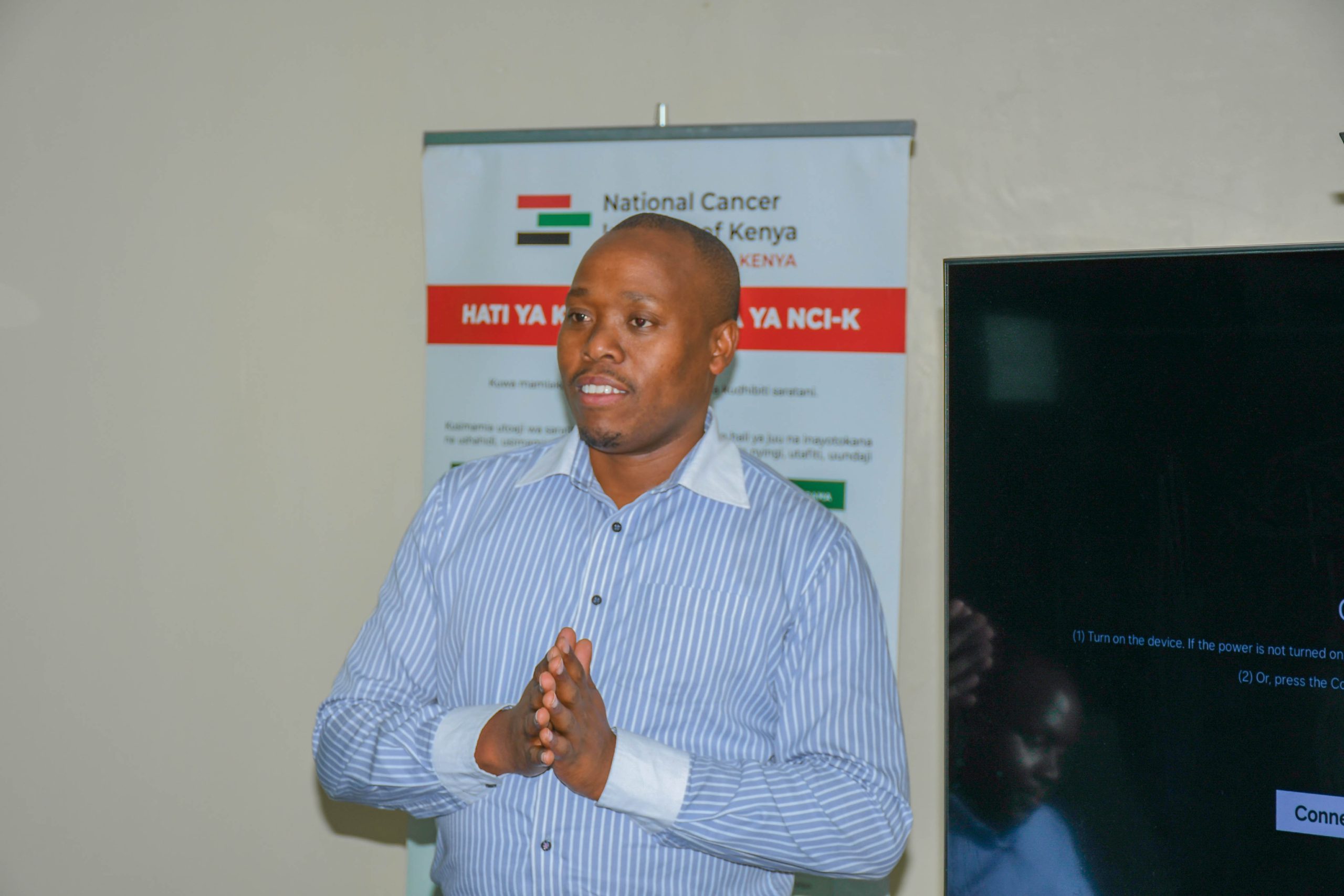Eldoret, April 28th, 2025 – In a significant step towards bolstering cancer care infrastructure and expertise across the nation, the National Cancer Institute of Kenya (NCI-Kenya) continues to forge strong collaborations with key healthcare institutions. Yesterday, April 28th, 2025, Dr. Elias Melly, the CEO of the National Cancer Institute of Kenya, joined the leadership of Moi Teaching and Referral Hospital (MTRH) in welcoming the Principal Secretary for Medical Services, Dr. Ouma Oluga, to their vital facility in Eldoret.

MTRH plays a leading role as a center for medical training, research, and specialized healthcare services within Kenya. Dr. Melly’s presence alongside the MTRH leadership highlights the National Cancer Institute of Kenya’s commitment to working hand-in-hand with regional hubs to elevate the standards of cancer prevention, diagnosis, and treatment available to all Kenyans.

During the visit, Principal Secretary Dr. Oluga was guided on a comprehensive tour of MTRH’s cutting-edge departments, showcasing the institution’s dedication to providing advanced medical care. The itinerary included the state-of-the-art Radiotherapy Centre, a crucial facility for cancer treatment utilizing radiation therapy. The tour also encompassed the Renal Centre, highlighting the interconnectedness of cancer care with the management of other chronic conditions. Furthermore, the Principal Secretary observed the capabilities of the Catheterisation Laboratory (Cathlab), essential for certain diagnostic and interventional procedures, and the sophisticated specialized MRI services, vital for accurate disease detection and monitoring.
Moi Teaching and Referral Hospital stands as a cornerstone of medical advancement in Kenya, serving not only as a major healthcare provider but also as an important center for medical training and research. Its commitment to expanding its capacity to address the growing burden of cancer is evident in the establishment of the Chandaria Cancer and Chronic Disease Centre in 2015. This significant development has dramatically enhanced MTRH’s ability to manage a higher volume of cancer cases, offering crucial outpatient care and fostering a robust environment for dedicated research endeavors.
The Chandaria Centre’s infrastructure includes a vibrant clinical trials unit, allowing for the investigation of innovative cancer therapies and contributing to global knowledge in the field. Moreover, the presence of a biobank highlights MTRH’s dedication to advancing cancer research through the systematic collection and storage of biological samples for future studies. This makes MTRH an indispensable hub for healthcare delivery, the education of future medical professionals, and cutting-edge cancer research within the region, aligning perfectly with the National Cancer Institute of Kenya’s national strategy to decentralize and strengthen cancer care capabilities across the country.
The collaborative spirit demonstrated during Principal Secretary Dr. Oluga’s visit to MTRH, with the active participation of NCI-Kenya’s CEO, Dr. Melly, signals a unified approach towards tackling the challenges posed by cancer in Kenya. By strengthening key institutions like MTRH and fostering a synergistic relationship, the National Cancer Institute of Kenya is working diligently to ensure that Kenyans have access to world-class cancer care closer to home.













